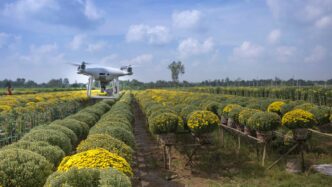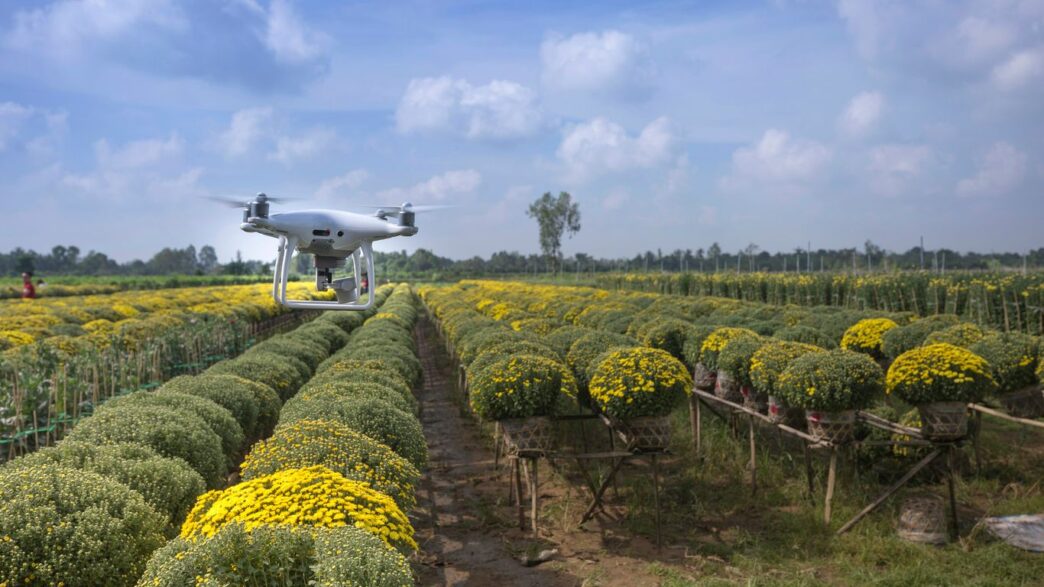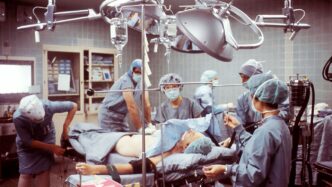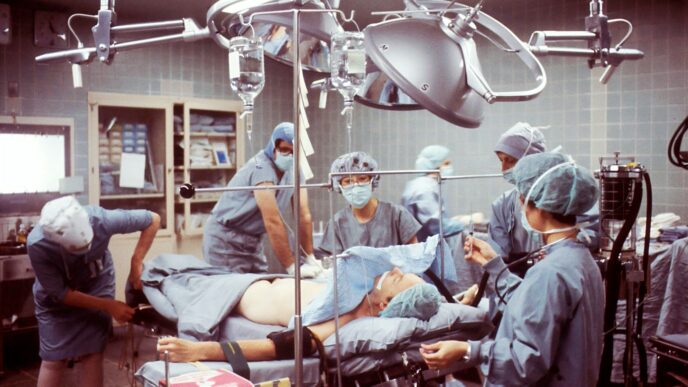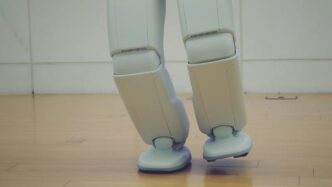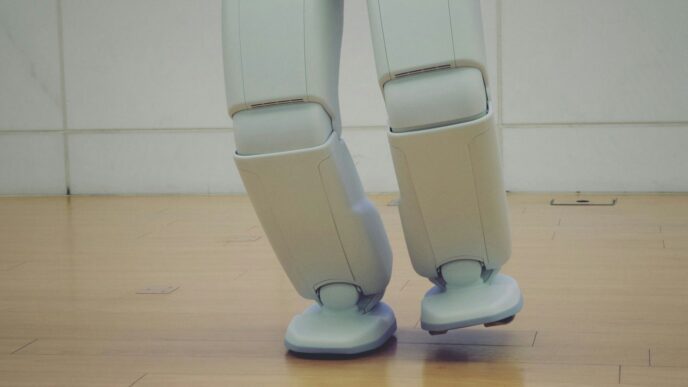Farming is changing, and fast. We’ve got more people to feed, and the weather’s getting wilder, making it tough to grow enough food. Plus, things like fertilizer cost a fortune now. So, what’s a farmer to do? Well, a lot of folks are looking at new tech, especially something called green automation. It’s all about using smart machines and computers to make farming better, more efficient, and kinder to the planet. Think robots doing the hard work and computers making smart guesses about what crops need. It’s a big shift from the old ways, but it might be exactly what we need to keep food on the table.
Key Takeaways
- Green automation uses technology like robots and AI to make farming more efficient and sustainable.
- Smart technologies, including IoT and predictive analytics, help farmers make better decisions with real-time data.
- Robots and AI are taking over labor-intensive tasks and improving precision in farming.
- Real-world examples show green automation is already boosting harvests and optimizing resources in greenhouses and crop management.
- The future of farming involves more autonomous machines, advanced AI, and the integration of new tech to meet global food demands.
The Dawn Of Green Automation In Agriculture
Farming today faces some pretty big hurdles. We’ve got a growing global population to feed, and at the same time, we’re dealing with climate change making growing conditions unpredictable. Plus, finding enough people to do the physically demanding work on farms is getting harder and harder. It feels like we’re at a crossroads, right? Traditional methods just aren’t cutting it anymore. That’s where green automation comes in, offering a fresh approach to these modern farming challenges.
Addressing Modern Farming’s Pressing Challenges
Farming has always been tough, but the pressures are mounting. We need to produce more food than ever before, but our resources like water and fertile land are limited. On top of that, extreme weather events are becoming more common, messing with planting and harvesting schedules. And let’s not forget the workforce. Many younger folks aren’t drawn to the back-breaking labor of traditional farming, leading to labor shortages in many areas. It’s a complex web of issues that requires new thinking.
The Evolution Towards Agriculture 4.0
Think of farming’s history like a series of upgrades. We went from basic tools and animal power (Agriculture 1.0) to mechanization with tractors and early machinery (Agriculture 2.0). Then came the chemical and biological advances, like fertilizers and GMOs, in Agriculture 3.0. Now, we’re stepping into Agriculture 4.0. This is where digital tech, robotics, and AI really start to play a major role. It’s all about using smart technology to make farming more precise, efficient, and sustainable. We’re moving from just growing crops to managing entire farming systems with data and automation.
Defining Green Automation’s Role
So, what exactly is green automation in this context? It’s not just about robots doing farm work. It’s about using technology – like AI, IoT sensors, and automated machinery – in ways that are good for the environment and help farms run more smoothly. This means using resources like water and fertilizer more wisely, reducing waste, and minimizing the environmental footprint of farming. The goal is to create farming systems that are both highly productive and environmentally responsible. It’s about making farming smarter, not just harder.
Robotics And AI: The Pillars Of Green Automation
When we talk about making farming greener and smarter, robots and artificial intelligence (AI) are really the main players. They’re not just fancy gadgets; they’re the tools that are fundamentally changing how we grow food. Think about it – farming has always been hard work, and with fewer people wanting to do that kind of labor, we need new ways to get things done. That’s where robotics and AI step in, making tasks more precise and less demanding.
Intelligent Systems For Crop Management
Managing crops used to be a lot of guesswork and manual checks. Now, AI is like having a super-smart assistant for your fields. It can look at data from sensors, drones, and even satellite images to figure out exactly what each plant needs. This means giving water and nutrients only where and when they’re needed, which is a huge win for saving resources and making plants healthier. AI can also spot problems, like diseases or pests, way before a human eye could. It learns from patterns, so it gets better at predicting what might go wrong and how to stop it.
Automated Harvesting And Precision Application
Harvesting is often the most labor-intensive part of farming. Robots are starting to take over here. Imagine machines that can pick ripe fruits or vegetables without damaging them, working tirelessly day and night. This isn’t just about speed; it’s about accuracy. These robots can be programmed to harvest only the best produce, leading to higher quality crops. Beyond harvesting, robots and drones can also apply things like fertilizers or pesticides with incredible precision. Instead of spraying an entire field, they can target just the spots that need it. This drastically cuts down on chemical use, which is great for the environment and also saves money.
Robotic Solutions For Labor Intensive Tasks
Farming has always relied on a lot of manual labor, from planting seeds to weeding fields. Robotics offers a way to automate many of these tough jobs. We’re seeing robots designed to plant seedlings with perfect spacing, weed out unwanted plants without chemicals, and even monitor soil conditions. These machines can work in conditions that might be difficult or unsafe for people, and they don’t get tired. This not only helps farms operate more smoothly but also makes farming a more attractive career by reducing the most physically demanding aspects of the job. It’s about making farming more efficient and sustainable for the long run.
Data-Driven Farming Through Smart Technologies
Farming used to be all about gut feelings and what your grandpa told you. Now, it’s getting a serious tech upgrade. We’re talking about using smart gadgets and a whole lot of data to make farms run better. It’s like giving your farm a brain, so it can tell you exactly what it needs, when it needs it. This whole shift means farmers can stop guessing and start knowing.
Leveraging IoT For Real-Time Insights
The Internet of Things, or IoT, is a big part of this. Think of it as a network of sensors scattered all over the farm. These little guys are constantly checking things like soil moisture, temperature, humidity, and even how healthy your plants look. All this information gets sent straight to your phone or computer. So, instead of walking miles to check a field, you can see what’s going on from your couch. It’s pretty wild when you think about it. This constant stream of data helps farmers spot problems early, like a patch of dry soil or the start of a pest issue, before they become major headaches. It’s all about having eyes everywhere, all the time.
Predictive Analytics For Enhanced Decision Making
Collecting all that data is one thing, but what do you do with it? That’s where predictive analytics comes in. It’s basically using smart computer programs to look at all the data you’ve gathered and figure out what’s likely to happen next. For example, based on weather patterns, soil conditions, and historical crop growth, these programs can predict how much yield you might get or when a disease might strike. This helps farmers make smarter choices. Should you plant a certain crop now or wait? Do you need to adjust your watering schedule? Predictive analytics gives you a heads-up, so you can plan better and avoid costly mistakes. It’s like having a crystal ball for your farm.
The Power Of Big Data In Agriculture
When you combine all the data from sensors, weather stations, machinery, and even market trends, you get what’s called ‘big data’. It sounds complicated, but it’s just a massive amount of information. Analyzing this big data can reveal patterns you’d never see otherwise. Maybe a certain fertilizer works best in specific soil types, or perhaps planting at a particular time leads to a higher quality harvest. This detailed information helps farmers fine-tune their operations for maximum efficiency and sustainability. It’s not just about individual fields anymore; it’s about understanding the whole farm as a complex system and making informed decisions that benefit both the bottom line and the environment. It’s a game-changer for modern farming.
Real-World Successes Of Green Automation
It’s one thing to talk about fancy new tech in farming, but it’s another to see it actually working out there in the fields. And guess what? It is! Farmers and researchers are already putting green automation to work, and the results are pretty impressive. We’re not just talking about theoretical benefits anymore; these are real farms seeing real improvements.
Automated Harvesting In Greenhouse Operations
Think about harvesting delicate crops like tomatoes. It’s a job that usually needs a lot of hands, and finding enough people can be a real headache. But now, farms like Nature Fresh Farms are using robots to do the job. These aren’t just clunky machines; they’re smart robots that can pick ripe tomatoes without bruising them. This means they can keep up with customer orders, even when labor is tight. It’s a big deal for keeping fresh produce available.
AI-Powered Disease Detection And Treatment
Spotting a plant disease early can save an entire crop. It used to be that farmers relied on their eyes and experience, which is great, but sometimes you miss things. Now, AI systems are stepping in. Researchers have developed systems that can look at pictures of plant leaves and tell you if there’s a disease, sometimes with over 97% accuracy. Some systems can even figure out the best way to treat it, like applying just the right amount of pesticide right where it’s needed. This means less waste and healthier plants.
Smart Greenhouses And Resource Optimization
Greenhouses are already pretty controlled environments, but automation takes them to a whole new level. Companies are using IoT sensors to keep a close eye on everything – temperature, humidity, soil moisture. This information lets farmers fine-tune conditions automatically, making sure plants get exactly what they need. Some smart greenhouses even use solar power and can be monitored from a phone app. This kind of precision means less water and energy used, which is good for the planet and the farmer’s wallet.
The Future Landscape Of Green Automation
So, what’s next for green automation in farming? It’s pretty exciting, honestly. We’re looking at a future where farms operate with even more smarts and less manual grind. Think machines that can do almost everything, guided by super-intelligent systems. It’s not science fiction anymore; it’s becoming the reality for farms aiming to be more productive and kinder to the planet.
Autonomous Machinery And Tractors
Imagine tractors and other big farm equipment driving themselves. That’s the direction we’re heading. These autonomous machines can work around the clock, doing tasks like plowing, planting, and spraying with incredible accuracy. They use GPS and sensors to know exactly where they are and what they need to do, reducing the chance of mistakes. This means less wasted fuel, less soil compaction, and more consistent work, no matter the time of day or weather.
- Reduced labor needs for repetitive tasks.
- Consistent application of treatments and fertilizers.
- Operation in conditions unsuitable for human drivers.
Advancements In AI And Machine Learning
Artificial intelligence and machine learning are the brains behind a lot of this new tech. AI can look at huge amounts of data – like weather patterns, soil conditions, and crop health from sensors – and figure out the best way to grow things. It can predict when a disease might show up, tell you the best time to harvest, or even how much water each part of a field needs. Machine learning means these systems get smarter over time, learning from past seasons to make even better suggestions. This ability to learn and adapt is what will truly transform farming decisions.
Integration Of Emerging Technologies
Beyond just robots and AI, other new technologies are getting woven into the farming picture. Things like advanced sensors that can detect tiny changes in plant health, or drones that can monitor fields from above with incredible detail. We’re also seeing more use of things like augmented reality to help technicians diagnose problems or even virtual reality for training. The idea is to connect all these different pieces of technology so they work together smoothly, creating a truly smart and responsive farming system.
| Technology Area | Key Future Developments |
|---|---|
| Robotics | Fully autonomous harvesters, swarm robotics for planting |
| AI & Machine Learning | Predictive yield modeling, automated pest identification |
| IoT & Sensors | Real-time nutrient monitoring, micro-climate sensing |
| Drones | Advanced crop spraying, soil analysis, and mapping |
| Data Management | Integrated farm-wide data platforms, blockchain for supply chain |
Benefits Driving Green Automation Adoption
So, why are farmers actually jumping on this green automation train? It’s not just about having fancy new gadgets. There are some really solid reasons, and they all boil down to making farming better, more sustainable, and, let’s be honest, more profitable. These technologies are fundamentally changing how we grow food for the better.
Boosting Agricultural Efficiency and Productivity
Farming has always been hard work, and a lot of it takes ages. Green automation is changing that. Think about it: instead of spending hours manually checking soil moisture or spraying fields, automated systems can do it much faster and more accurately. This means less time wasted and more crops grown. We’re seeing systems that can plant, weed, and even harvest with incredible precision. This isn’t just about speed; it’s about doing things right the first time, which leads to better yields and less guesswork. Farmers can make smarter choices because they have better information, right when they need it.
Enhancing Sustainability and Environmental Stewardship
This is a big one. We need to grow more food, but we also need to take care of the planet. Green automation helps with both. Precision farming, for example, means water, fertilizers, and pesticides are used only where they’re absolutely needed. This cuts down on waste and stops harmful chemicals from getting into our water and soil. Drones and sensors can monitor crop health, so farmers know exactly what needs attention, reducing the need for broad chemical applications. It’s about working smarter with our natural resources, like water and soil, so they stay healthy for years to come. This approach helps meet the growing demand for sustainably grown food.
Achieving Significant Cost Savings
While the initial investment in some of these technologies can seem high, the long-term savings are pretty impressive. Automating tasks that used to require a lot of manual labor can significantly cut down on labor costs. Plus, using resources like water and fertilizer more efficiently means you’re not spending money on things you don’t need. Less waste generally translates to lower expenses. For instance, robotic weeders can reduce the need for expensive herbicides. Predictive analytics can help avoid costly crop losses due to disease or bad weather. Over time, these savings add up, making farming a more financially stable business.
The Road Ahead for Farming
So, what does all this mean for the future of farming? It’s pretty clear that technology isn’t just a passing trend; it’s becoming a core part of how we grow food. We’re seeing robots help out with tough jobs, smart systems making better guesses about what crops need, and all sorts of digital tools helping farmers make smarter choices. This shift isn’t just about making things easier or faster, though. It’s really about growing food in a way that’s kinder to the planet, uses resources more wisely, and helps us feed everyone, now and in the years to come. It’s an exciting time, and the changes we’re witnessing are just the beginning.
Frequently Asked Questions
What is “green automation” in farming?
Green automation in farming means using smart technology, like robots and computers, to help grow food in a way that’s good for the planet. It’s about making farms more efficient and using fewer resources like water and pesticides, which helps protect the environment.
How do robots help in farming?
Robots can do many farming jobs! They can help plant seeds, water crops precisely, pick fruits and vegetables when they’re ready, and even spray just the right amount of bug spray where it’s needed. This means less work for people and more accurate farming.
What is “Agriculture 4.0”?
Agriculture 4.0 is like the next level of farming. It uses digital tools, smart machines, and lots of data to make farming much more advanced and efficient. Think of it as farming getting a high-tech upgrade!
How does technology help farmers make better decisions?
Technology, like sensors and computers, collects a lot of information about the soil, weather, and plants. This data helps farmers understand exactly what their crops need and when. It’s like having a super-smart assistant that tells you the best way to grow your food.
Are there real examples of this technology being used?
Yes! For instance, some farms use robots to pick tomatoes, and other systems use cameras and AI to spot plant diseases early so farmers can treat them quickly. Smart greenhouses also use technology to control the environment perfectly for plants.
What are the main benefits of using green automation?
The biggest benefits are making farms work better and faster, using fewer resources to help the environment, and saving money. It helps farmers grow more food while being kinder to the Earth.

